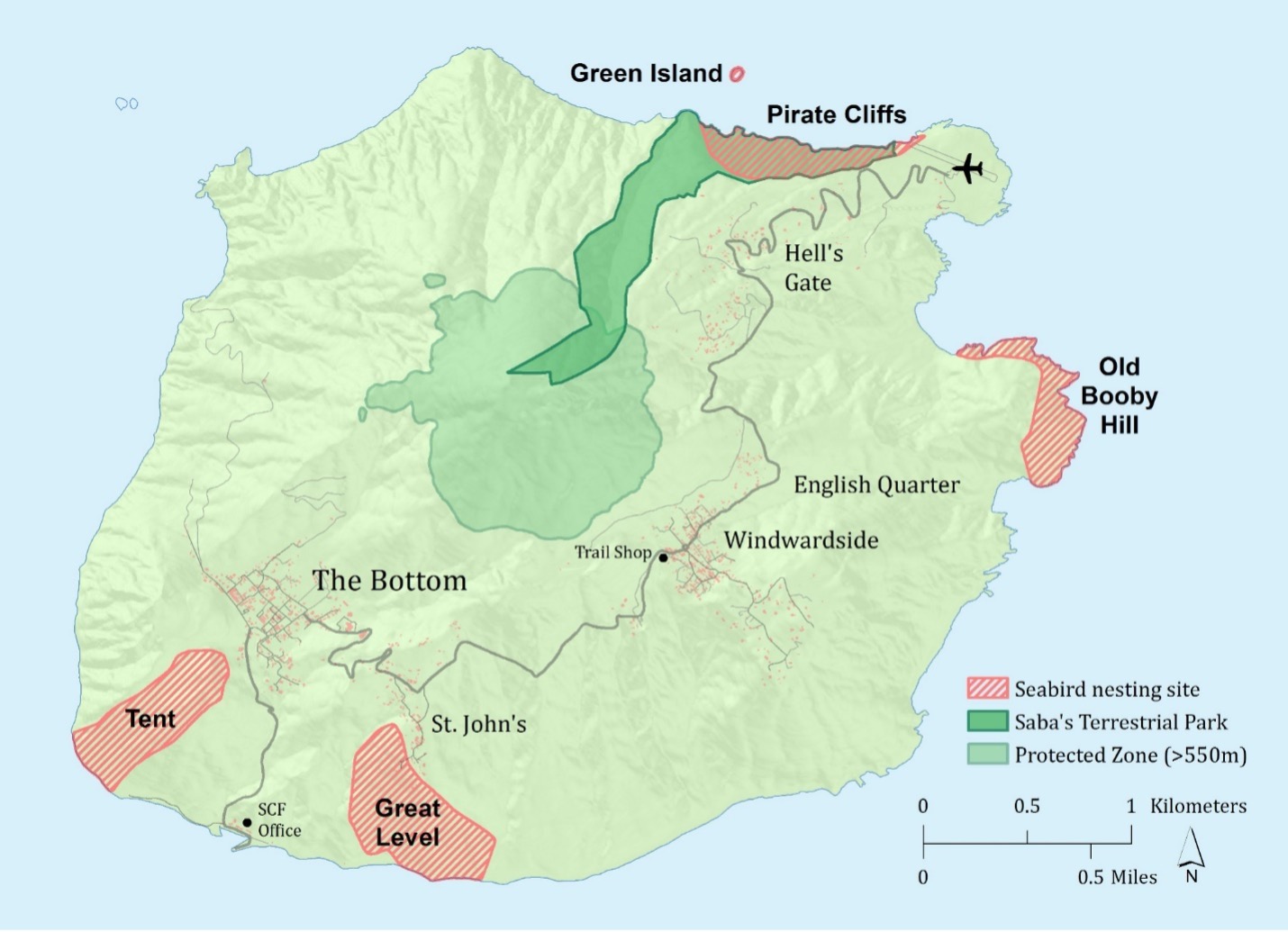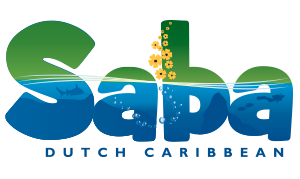Whether looking out over the island’s steep cliffs or hiking through Mount Scenery’s lush rainforest, you will encounter many beautiful bird species on Saba. The island is home to at least 100 bird species, many of which are migratory birds that visit the island to rest and feed before continuing their journey. Birdlife International has identified the island’s entire coastline as an Important Bird Area (IBA) for good reason. The area supports globally important populations of seabirds, as well as species that are found only in this part of the world. The population dynamics of the Red-billed tropicbirds are yet to be fully comprehended. The most recent estimates indicate that Saba’s steep cliffs provide nesting grounds that may well hold a significant percentage (up to 33% to 40%) of the world’s population.
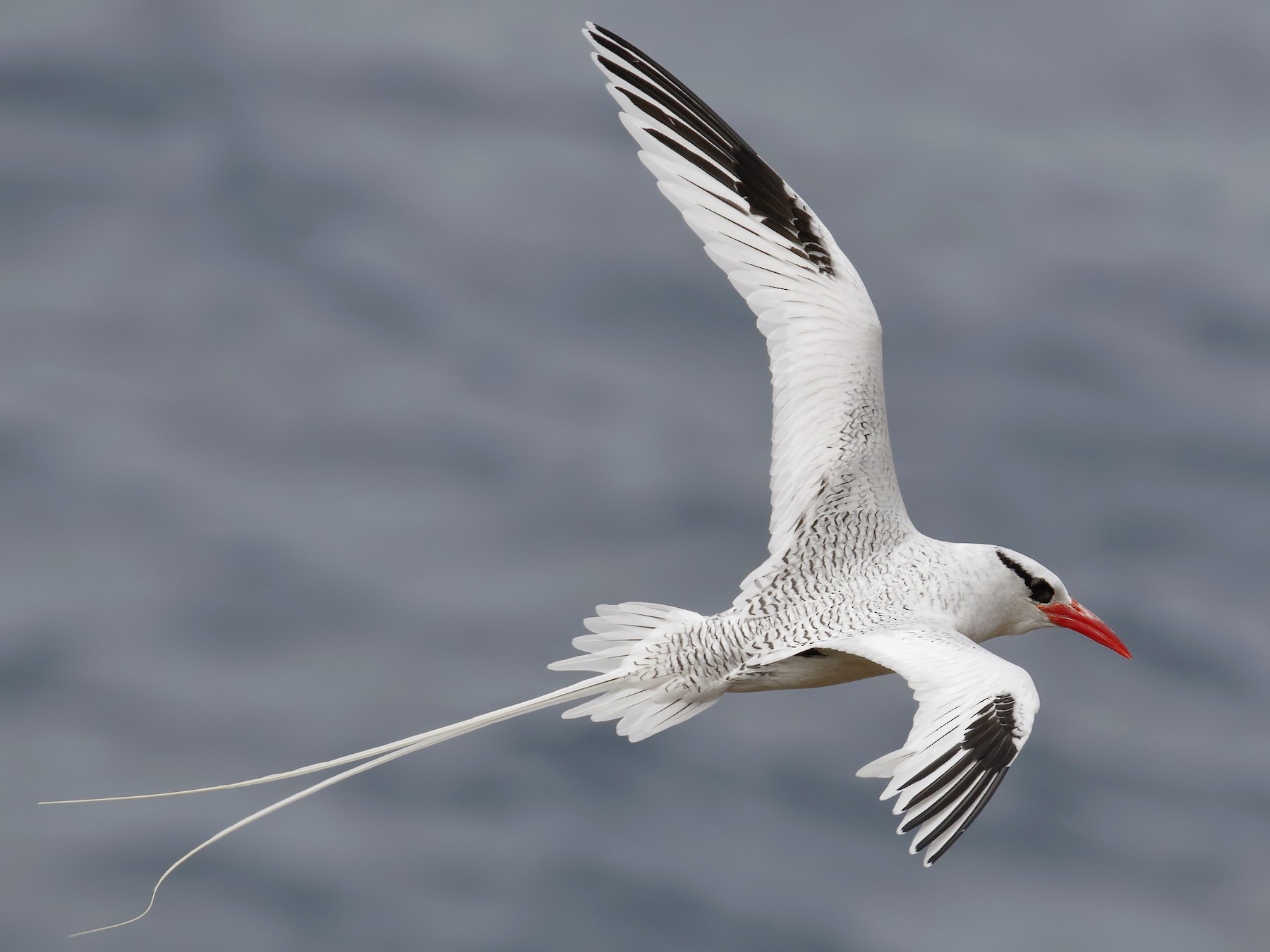
Red Billed Tropicbird
Local name: White Bird
The red billed tropic bird has mostly white plumage with some black markings on the wings and back, a black mask and, as its name suggests, a red bill. Most adults have tail streamers that are about two times their body length, with those in males being generally longer than those in females. This species can be found across the tropical Atlantic, eastern Pacific, and Indian Oceans. This iconic species is central to the Saba Conservation Foundation (SCF) emblem, and residents and visitors alike revel in the aerobatic displays, and sheer majesty of this primarily white, long-tailed seabird.
Saba and neighboring St. Eustatius are home to the Caribbean’s largest nesting population of Red-billed Tropicbirds, with three colonies being identified on Saba (Great Level, Tent Bay, and Old Booby Hill). From these three colonies, a population of 750–1,000 pairs of Red-billed Tropicbirds are believed to nest around the island in coastal cliffs, and rocky hills. From numerous studies and monitoring done on Saba, this species is also at risk of predation from invasive species such as cats, rats, and goats.

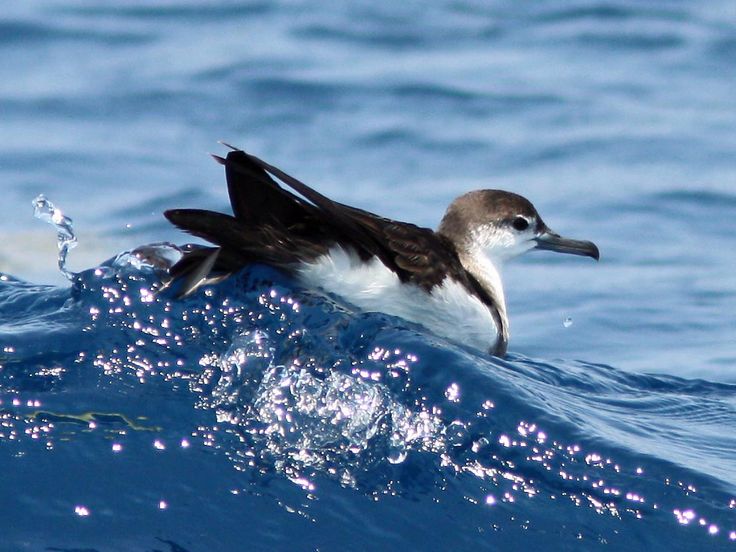
Audubons Shearwater
Local Name: Wedrego
The Audubon Shearwater is Saba’s national bird and is displayed prominently on the island’s crest. This seabird spends much of its time out at sea, feeding out in the ocean during the day, and only returning at night to its breeding grounds on Saba and other islands, where it is believed to nest in underground burrows or similarly concealed locations. It is notoriously difficult to survey the Wedrego due to its secretive behavior and the steep and dangerous terrain it favors. Globally and in the Caribbean, Audubon Shearwater populations are threatened by introduced predators such as cats, rats, and goats.
Scientists have conducted multiple surveys at various sites around the island including Wells Bay, The Bottom, Windwardside, Hell’s Gate, and Sulphur Mine with Shearwaters being detected at all surveyed locations and over 450 birds were recorded. Shearwaters were found to fly up numerous valleys on the island towards prominent cliffs to nest. the same area of the Mt. Scenery trail and is used to hike down to the Bottom. Hikers will encounter views of the Bottom and will be in secondary rainforest. Trail takes around an hour one way.

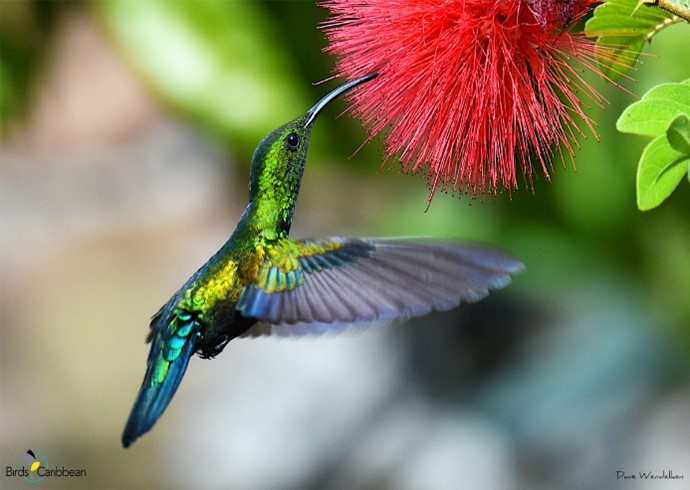
Green-throated Carib
Local name: Hummingbird
The Green-throated Caribs are generally common in the Lesser Antilles, ranging north to the Virgin Islands and Puerto Rico; where they inhabit wet forests, semi-deciduous woodlands, heavily degraded former forests, second growth scrub, as well as urban gardens and parks. The Green-throated Carib averages 4.1 - 4.7 inches (10.5-12 cm) - including tail and bill. The adult male has a mostly green coppery upper plumage with a blue iridescence on the upper back and rump. He has a bright green throat patch bordered by a metallic blue followed by the black abdomen. The blue band can only be seen in ideal light conditions, appearing black in less-than-optimal light conditions
On Saba, they are commonly seen in the villages, gardens, and on the various hiking trails through the rainforest. They primarily feed on nectar taken from a variety of brightly colored, scented small flowers of trees, herbs, shrubs, and epiphytes.

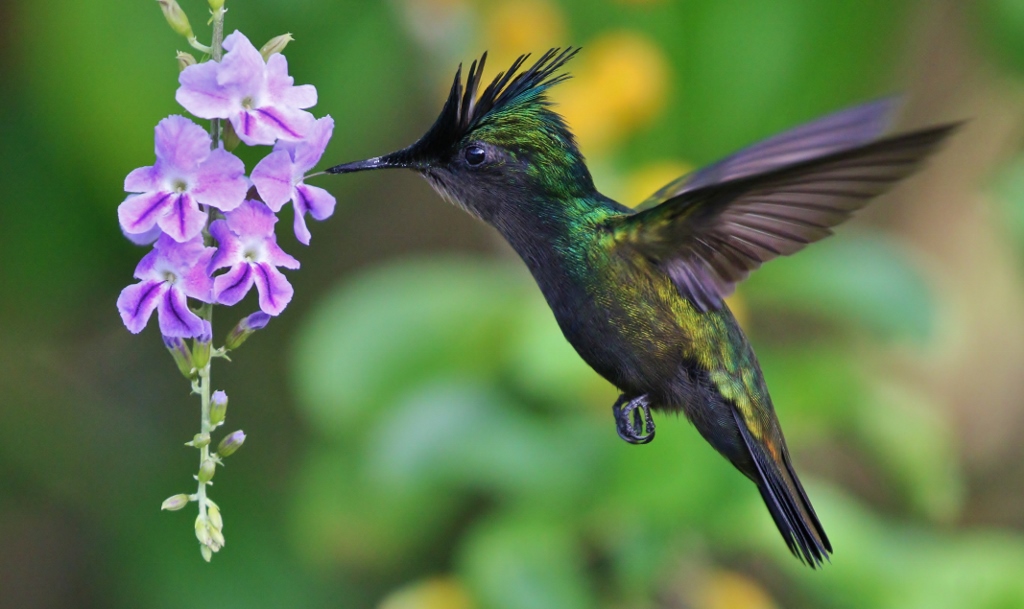
Antillean-Crested Hummingbird
Local name: Doctor Bird
A tiny hummingbird with a small geographic range in the Caribbean, from eastern Puerto Rico through much of the Lesser Antilles. It is easily identified by its small size and the crest on its head.
The plumage is mostly dark, with green, blue, and purple iridescence on the head, back, sides and the wings. The male's underside is blackish, while the females under plumage is pale.
The Antillean Crested Hummingbirds primarily feed on nectar taken from a variety of brightly colored, scented small flowers of trees, herbs, shrubs, and epiphytes. They also take some small spiders and insects - important sources of protein particularly needed during the breeding season to ensure the proper development of their young.
The female builds a small cup nest made up of fine fibers held together by spiderwebs. The Antillean Crested Hummingbird is considerably smaller than the other two species of hummingbird found on Saba.

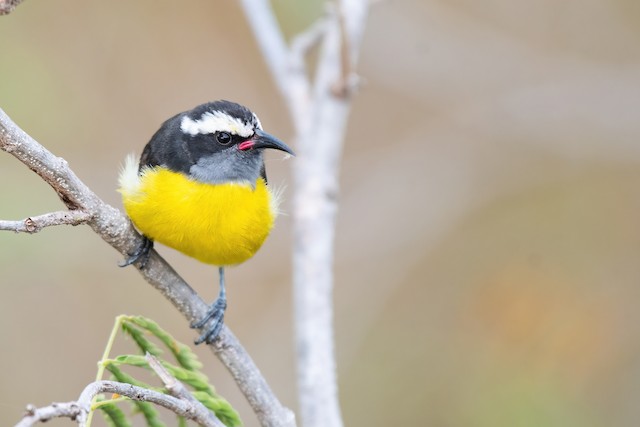
Bananaquit
Local Name: Yellow Breast
The Lesser Antillean form of Bananaquit is common to abundant in woodland edges, gardens, and scrub, and probably the most numerous resident songbird throughout its range. Readily found in the gardens and restaurants of resorts that host the multitudes of vacationing tourists who visit many of the islands in its range: such as Anguilla, Antigua, St. Martin, St. Kitts, St. Lucia, Barbados, Aruba, Bonaire, and Curaçao.
It is readily recognized by its curved, sharp-tipped bill, broad white eyebrows, blackish mask and upperparts, and yellow breast.
Bananaquits eat the nectar of several of Saba’s flowers. If they cannot easily reach the nectar, they puncture the flowers base. The bananaquit has been observed breeding in every month of the year.

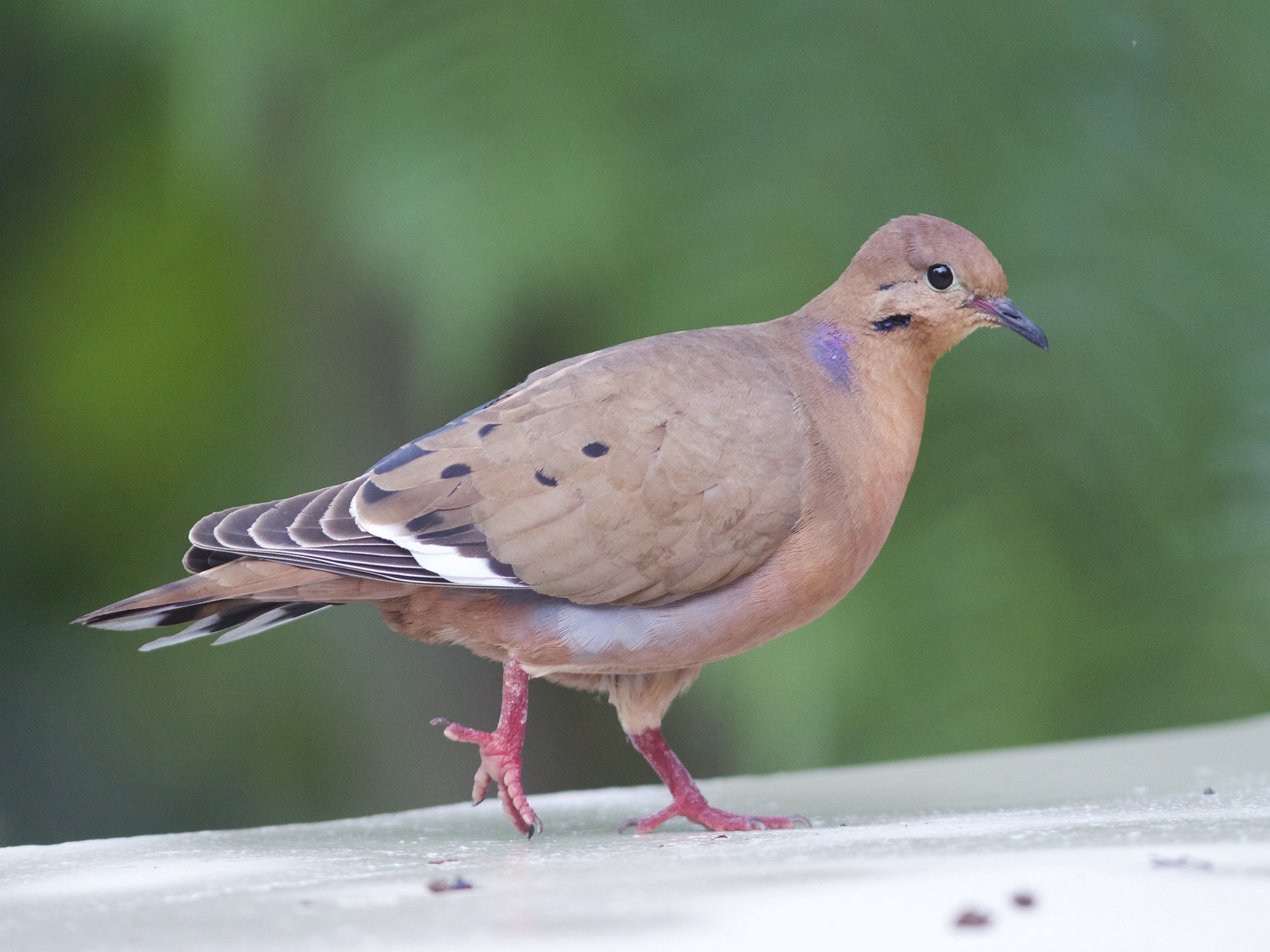
Zenaida Dove
Local name: Turtle dove
It is a common and generally easy to find across nearly all its range. It can be found on all the island in the West Indies, in Florida, and in Mexico. It is found in various open, semi-open and wooded habitats including urban areas.
Overall coloration is sandy-brown on the upperparts, becoming rich buffy-brown on the head, neck, and underparts. The flanks are typically gray but are often concealed by the folded wing.
As with its close relatives, Zenaida Dove has a short, bold, black whisker stripe below and behind the eye. A thinner black line is sometimes present behind the eye.
These birds forage on the ground, mainly eating grains and seeds, sometimes also on insects. They often swallow fine gravel to assist with digestion and will also ingest salt from mineral rich soils or livestock salt licks.
The Zenaida dove is also the national bird of Anguilla.

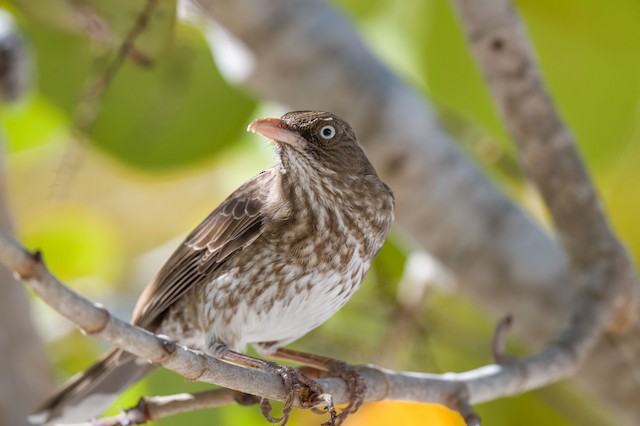
Pearly-eyed Thrasher
Local name: Thrush
It is found on many Caribbean islands, from the Bahamas in the north to the Grenadines in the south, with an isolated population on Bonaire. This species of bird is very common on Saba and is seen year-round. It is a large, robust, mostly brown with a bright white staring eye, a heavy, horn-colored bill, and large white undertail patches.
It prefers to live in bushes and trees in mountain forests and coffee plantations. The pearly-eyed thrasher is described as an aggressive, opportunistic omnivore that feeds primarily on large insects, but also feeds on fruits and berries, and will occasionally eat lizards, frogs, small crabs and other bird’s eggs and nestlings. It grows to 28 to 30 cm in length.

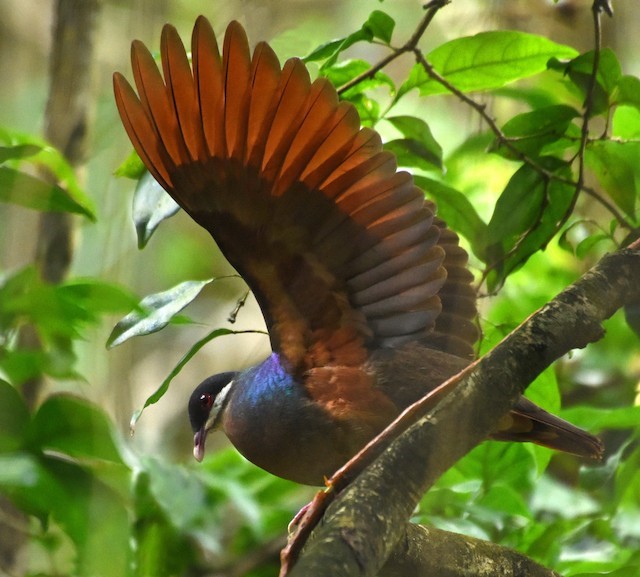
Bridled Quail Dove
Local name: Wood hen
The Bridled Quail dove can be found throughout the islands of the Lesser Antilles including Puerto Rico.
It lives in forest and woodland areas, giving it its common name, Wood hen. It forages for fruit, flowers, and seeds amongst dead leaf litter, using its bill to move leaves when needed.
It has Dark brown upperparts with an iridescent mantle and neck, brown and gray underparts, and a strikingly bold white stripe on its head and neck.
This species population has decreased dramatically due to hurricanes and predation by feral cats.

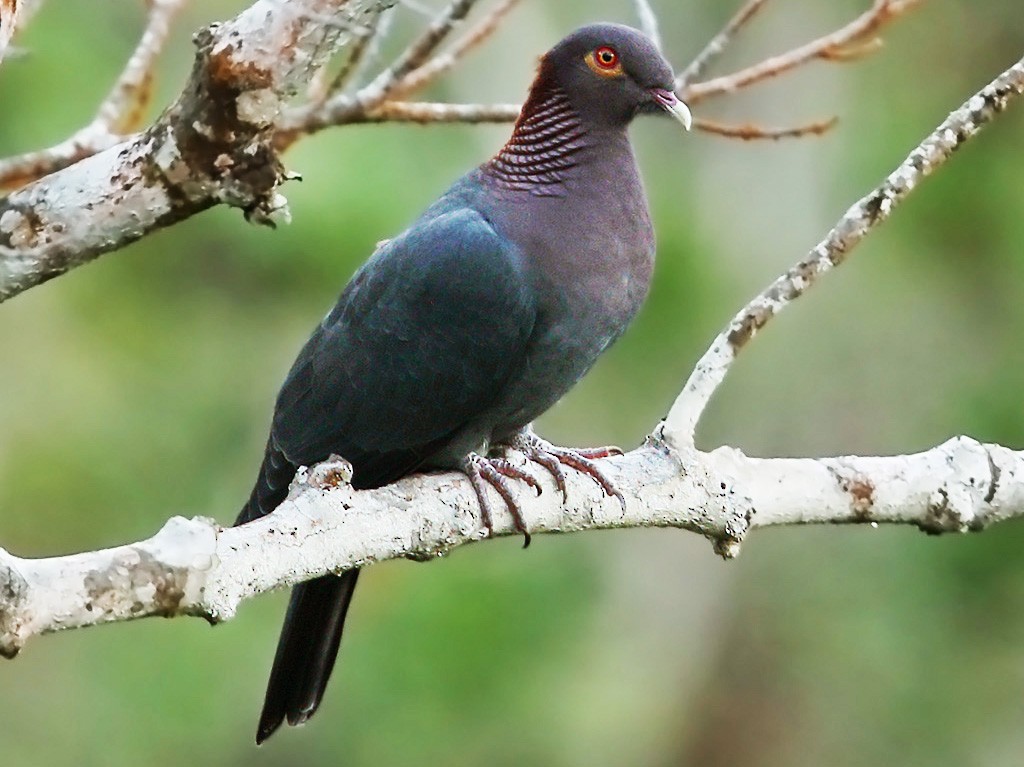
Scaly-naped Pigeon
Local Name: Blue pigeon
Scaley-naped pigeons are relatively common particularly amongst mature and large trees and dense vegetation. A good place to see them is at water holes, where they like to assemble in the early morning and late afternoon.
They are a large bird that is found throughout most of the island in the Caribbean and even parts of the United States.
It is easily identified with its dark wine-colored head and neck and has a yellowish outer eye ring and a red inner eye ring.
It feeds heavily on vegetative matter such as seeds, fruits, and leaf buds, but will also feed on animal matter, particularly small snails, and other invertebrates.

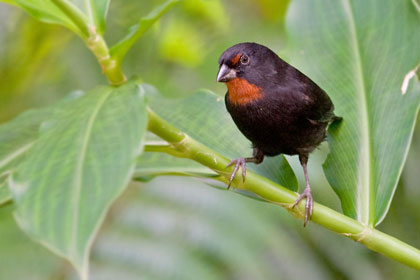
Lesser Antillean Bullfinch
Local Name: Bullfinch
Endemic to the Lesser Antilles from the Virgin Islands to Grenada, where it is generally common in wooded and scrub habitats, gardens, and towns—highly tolerant of human development.
Male is black or charcoal-gray overall with a red colored neck and has red markings above the eye. Females have grayish underparts and brownish upperparts, usually with rusty highlights in the wings and buffy or cinnamon undertail coverts.
The Lesser Antillean Bullfinch has a heavy beak that it uses to break open seeds. It can be observed foraging in different habitats at different elevations.

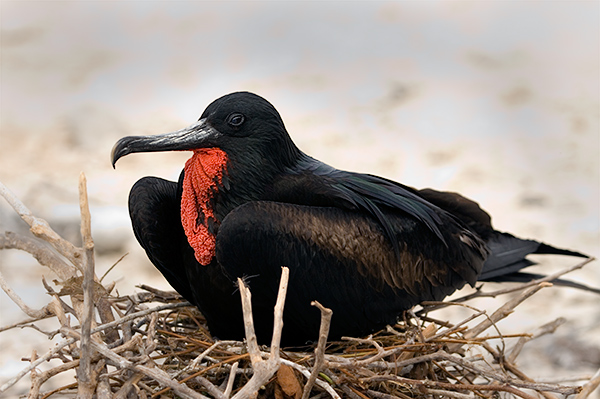
Magnificent Frigatebird
Local Name: Weather Bird/Man-Of-War
These birds can be found in the Caribbean, United States, and even parts of Mexico. There are five different species of frigatebirds that can be found near tropical and subtropical coasts around the world. These birds can fly for hours, days, or even weeks at time due to their large wingspan.
Males have a bright red pouch on the throat, which they inflate like a balloon to attract females. Females unlike most other seabirds look different than males with their white chest. The juveniles of the species have a white head and belly.
Sailors nicknamed this bird the man-of-war because of the ferocious way it harasses pelicans, egrets, terns, Red-billed tropicbirds, and cormorants until they drop their catch. This species also spends most of its life flying effortlessly over the ocean. It rarely lands on the water even though it has webbed feet, because unlike other seabirds it lacks waterproof feathers.

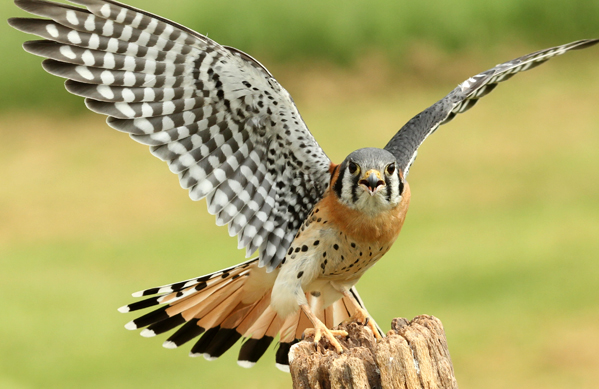
American Kestrel
Local name: Killy Killy
The American Kestrel (Falco sparverius) is a beautiful small bird of prey that lives on all six Dutch Caribbean Islands. One of the smallest birds of prey this species is known locally as Killy Killy – the name refers to the rapid sound the bird makes when excited or upset.
These birds can be seen perched high in a tree where it searches for prey. It also hunts by hovering above the ground, its long-pointed wings beating fast while it scans the ground for insects, lizards, small birds, and small rodents.
American Kestrels breed on all of the Dutch Caribbean Islands. The breeding season begins at the onset of spring, and once the female has chosen her male companion, the birds will stay monogamous during the breeding season. The kestrel does not build nests themselves and are not picky about a nest site.
The American Kestrel eats a wide range of food including lizards, beetles, small birds, and mammals. It often ends up as prey for larger raptors, including the Red-tailed hawk.

Seabird nesting sites around Saba
